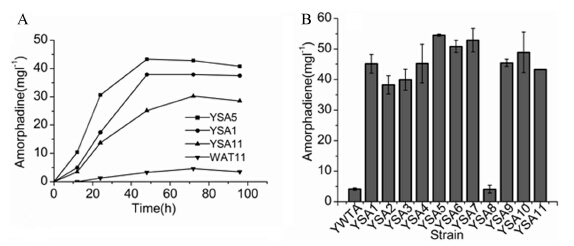Novel Knockout Targets Identified Improve Terpenoids Biosynthesis
2014-12-04
Many terpenoids, which have important pharmacological activity and commercial value, are generally used in drugs and fragrances. However, the low concentrations present in host organisms and the difficulty of extraction and separation from plant’s organisms limit their suitability for commercial applications. By the appearance and development of synthetic biology, the system of Saccharomyces cerevisiae (S. cerevisiae) becomes a very important platform for producing large quantities of plant terpenoids in microorganisms. How to improve S. cerevisiae ’s ability to terpenoids synthesis has become the key problem.
In order to improve terpene compounds synthetic ability of S. cerevisiae, Prof. ZHANG Yansheng and his research team from Wuhan Botanical Garden identified the potential knockout sites for promoting terpenoid production and constructed the corresponding single mutant by molecular manipulations based on computational analysis of the S. cerevisiae metabolic network
The growth rates of these strains were normal under deletion of the identified gene sites. The yield of amorphadiene was chosen as the testing terpenoid to examine the effect of the gene deletions on the expression of exogenous terpenoids’ biosynthesis, was 8–10 folds compared to the wild type strain. Therefore, it indicated that the knockout sites could be engineered to promote the synthesis of exogenous terpenoids.
Results entitled “Identification of Novel Knockout Targets for Improving Terpenoids Biosynthesis inSaccharomyces cerevisiae” were published in Plos One (20149(11) e112615).

The production of amorphadiene in the wild type WAT11 strain and single mutants (Image by SUN Zhiqiang)